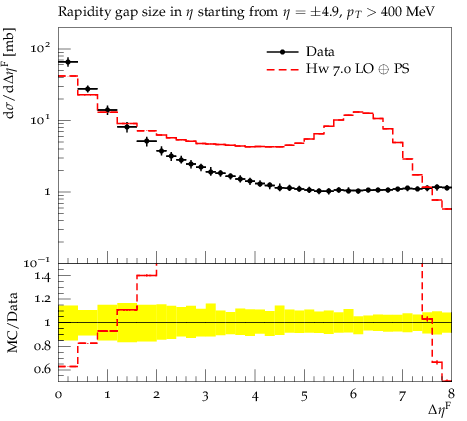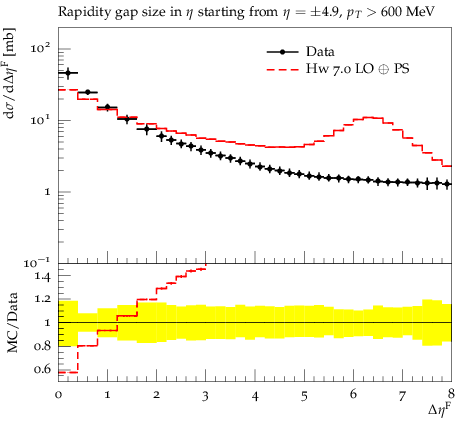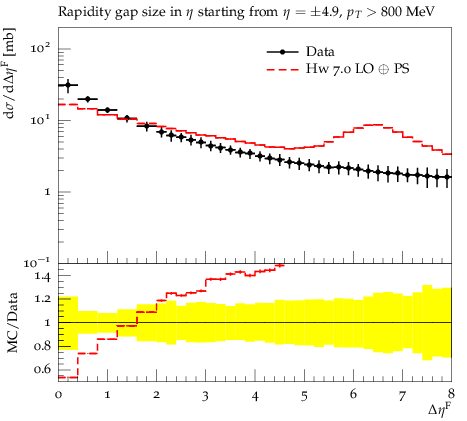ATLAS_2012_I1084540
Pseudorapidity gap distributions in proton-proton collisions at √s=7 TeV are studied using a minimum bias data sample with an integrated luminosity of 7.1 inverse microbarns. Cross sections are measured differentially in terms of ΔηF, the larger of the pseudorapidity regions extending to the limits of the ATLAS sensitivity, at η=±4.9, in which no final state particles are produced above a transverse momentum threshold p⊥ cut. The measurements span the region 0<ΔηF<8 for 200<pT cut<800MeV. At small ΔηF, the data test the reliability of hadronisation models in describing rapidity and transverse momentum fluctuations in final state particle production. The measurements at larger gap sizes are dominated by contributions from the single diffractive dissociation process (pp→Xp), enhanced by double dissociation (pp→XY) where the invariant mass of the lighter of the two dissociation systems satisfies MY≲. The resulting cross section is \mathrm{d} \sigma / \mathrm{d} \Delta \eta_F \sim 1 mb for \Delta \eta_F \gtrsim 3. The large rapidity gap data are used to constrain the value of the pomeron intercept appropriate to triple Regge models of soft diffraction. The cross section integrated over all gap sizes is compared with other LHC inelastic cross section measurements.
Generated at Saturday, 05. December 2015 12:15PM



